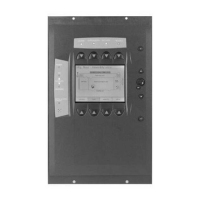Application and functions
1.2 Functions
CIM
Operating Manual, 11/2022, A5E51250518-AC
9
SGLAN
Devices distributed in the same SGLAN (Secured Global Local Area Network) can
communicate with each other.
Basic functions
The CIM supports the following functions:
• Web-based configuration
A Web-based user interface (Web-based configuration) for the configuration of the CIM.
• Protocol gateway
LOGO! BM and Modbus RTU compatible devices can communicate with CIM via
S7/Modbus protocol based on the Universal Data Model (UDM).
Application can access data through RESTful API on CIM based on UDM.
• Data management
CIM can perform an action when a configured event is triggered.
– After configured, CIM can perform an action, for example, change the data in UDM,
send one or more short messages to one or more contacts.
• Mobile cellular
With the CIM, you can establish a mobile data connection to a mobile cellular network.
• GNSS position
– Display the position information on the web page
– Enable/disable map the position data to UDM
• Time Server
– CIM can act as an NTP server to provide time for LOGO! BM or other NTP client.
– CIM can enable/disable mapping the time to the Universal Data Model (UDM). Then the
device without NTP can get the time via multi-protocol or RESTful API.
• Power on/off SMS
– CIM can send a power on/off SMS to one defined contact.
• Certificate
– Owned certificate: generate and select certificate for setting up a secured web server
and a SGLAN server
– Trusted certificate: select certificate for setting up SGLAN Client
Web-based configuration
You can configure the CIM locally using a web-based configuration that can be displayed with
a Web browser. The web-based configuration provides the following functions:
• Configure the LAN of CIM
• Manage the contacts

